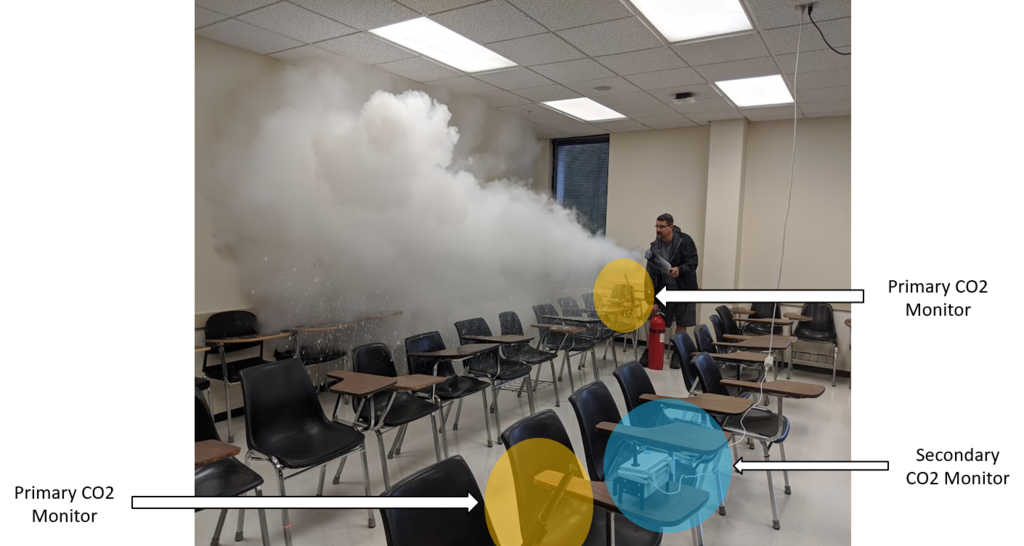Thomas M. Peters, David Rabidoux, Charles O. Stanier, and T. Renee Anthony
Assessment of University Classroom Ventilation during the COVID-19 Pandemic
https://doi.org/10.1080/15459624.2022.2053142

CO2 Decay from a Pulse Test: 2 room model

ABSTRACT: Ventilation plays an important role in mitigating the risk of airborne virus transmission in university classrooms. During the early phase of the COVID-19 pandemic, methods to assess classrooms for ventilation adequacy were needed. The aim of this paper was to compare the adequacy of classroom ventilation determined through an easily-accessible, simple, quantitative measure of air changes per hour (ACH) to that determined through qualitative ‘expert judgement’ and recommendations from the American Society of Heating, Refrigerating and Air-Conditioning Engineers (ASHRAE) and the American Conference of Governmental Industrial Hygienists (ACGIH). Two experts, ventilation engineers from facilities maintenance, qualitatively ranked buildings with classrooms on campus with regard to having “acceptable classroom ventilation”. Twelve lecture classrooms were selected for further testing, including a mix of perceived adequate/inadequate ventilation. Total air changes per hour (ACH) was measured to quantitatively assess ventilation through the decay of carbon dioxide in the front and rear of these classrooms. The outdoor ACH was calculated by multiplying the total ACH by the outdoor air fraction. The classrooms in a building designed to the highest ASHRAE standards (62.1 2004) did not meet ACGIH COVID-19 recommendations. Four of the classrooms met the ASHRAE criteria. However, a classroom that was anticipated to fail based on expert knowledge met the ASHRAE and ACGIH criteria. Only two classrooms passed stringent ACGIH recommendations (outdoor ACH > 6). None of the classrooms that passed ACGIH criteria were originally expected to pass. There was no significant difference in ACH measured in the front and back of classrooms, suggesting that all classrooms were well-mixed with no dead zones. From these results, schools should assess classroom ventilation considering a combination of classroom design criteria, expert knowledge, and ACH measurements.